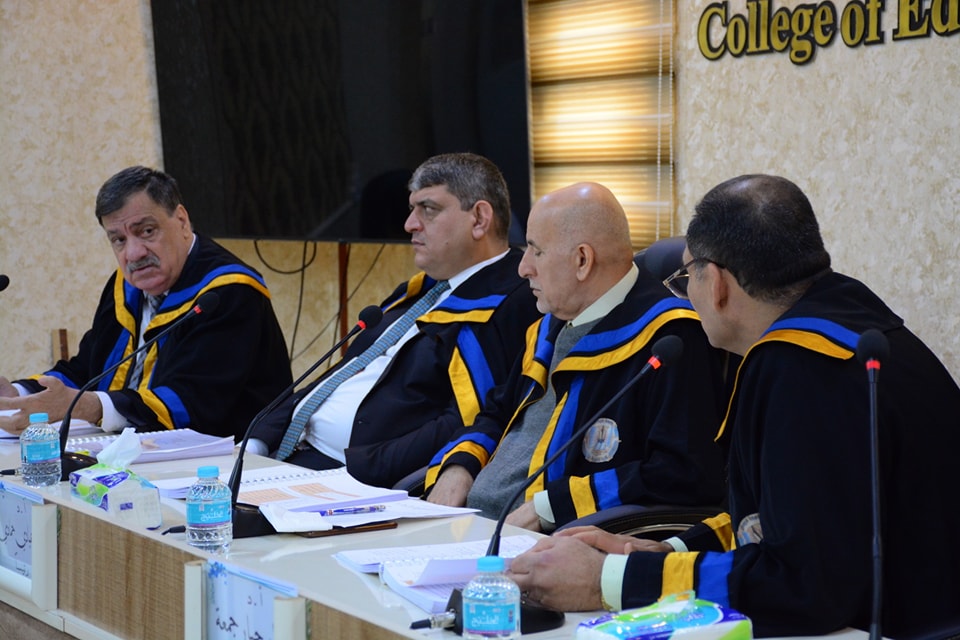The master’s thesis was discussed in the Department of Geography at the College of Education, University of Maysan Tagged (spatial and seasonal variation of soil salinity on the shoulders of the Tigris River in Maysan and Basra governorates) For postgraduate student (Zahraa Abdel Hadi Musalat) Under the supervision of Professor Dr. Kazem Shanta Saad. The thesis aims: to identify one of the problems that the agricultural soils suffer from in the areas of the shoulders of the Tigris River in the provinces of Maysan and Basra, noting that these areas are among the important agricultural areas in the provinces of Maysan and Basra, which are characterized by soils suitable for growing many agricultural crops, especially horticultural crops. And identify the natural and human factors that affect this phenomenon (soil salinity problem) and identifying the types of salty soils according to the American and Russian classification and mapping them. This master’s thesis dealt with one of the important problems facing agricultural soils in the areas of the shoulders of the Tigris River in the provinces of Maysan and Basra, and because these areas are of great agricultural importance because they are characterized by many characteristics that make them have high agricultural productivity compared to other agricultural areas in the provinces of Maysan and Basra.
This master’s thesis concluded
1- The nature of the climate in Iraq, which is characterized by high temperatures, lack of rainfall and vegetation cover, and increased wind speed, especially in this dry season, has led to an increase in soil salinity and poor quality.
2- Rainfall had a clear role in reducing the level of salts in the soil of the study area compared to the dry season.
3- The study showed that there is a variation in the concentration of salts during the dry and rainy seasons, as their concentration increased during the dry season.
4- The high groundwater level and poor drainage of the soil of the study area, and due to increased evaporation rates and high capillary activity, this led to an increase in the percentage of salts in the soil.









